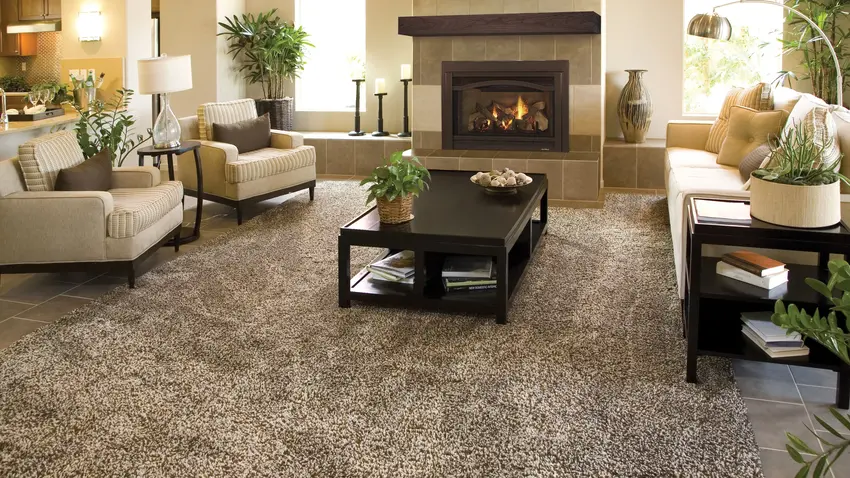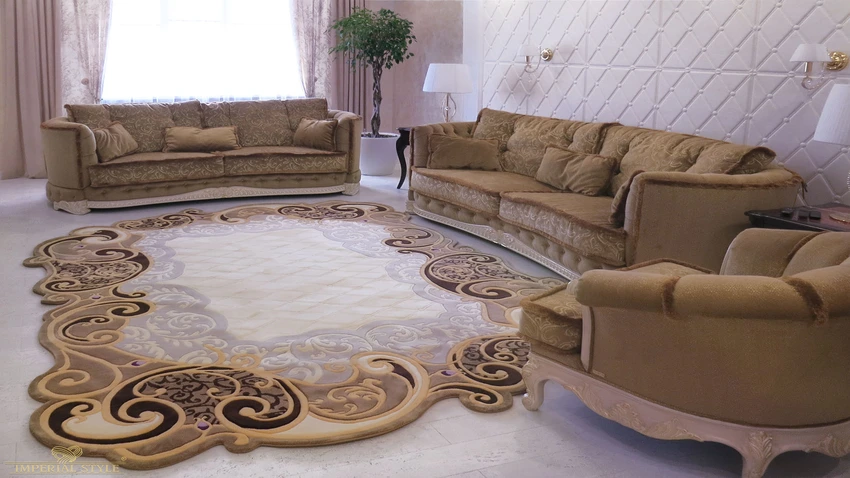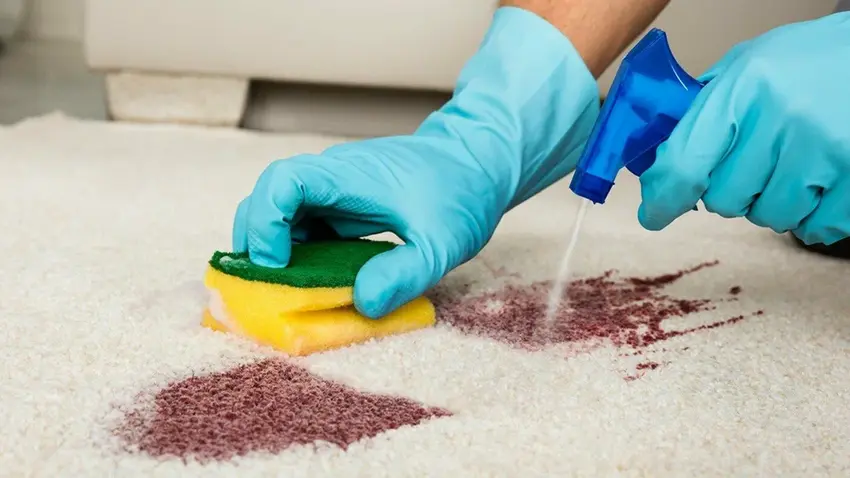Flooring decides the comfort and functionality of your home. However, carpets and tiles are both popular choices with their unique set of features and limitations. Where carpets offer a soft feel, they come up with high maintenance. In contrast, tiles are hard but easy to maintain. So, it’s a game of priorities.
In this article, Carpet Centre will share the primary characteristics of both floorings to help you make an informed decision. After reading, you can easily identify which aligns with your goals perfectly.
Let’s start with the carpet vs. tiles debate to find the best flooring for your home.
Carpet vs. Tiles | Expert Comparison To Find Perfect Flooring
We are going to compare both of these floor coverings on some core parameters considering basic home flooring needs as a priority. Surely, we’ll end up finding the most suitable one. You must consider your own set of renovation and comfort goals while reading the comparison factors.
And here these are:
Design Options
When it comes to design, carpets offer matchless options such as the availability of vast color tones, prints, textures, and more. You can ensure hundreds of simple abstract, or stripe to complex geometric patterns with carpets. They’re available in modern and traditional designs such as Persian, Arabic, and Turkish Carpets.
In contrast, tiles add visual interest to your floors and contribute to practical aesthetics. They can be space-defining if installed in hallways, living rooms, and bathrooms. You can opt for their different geometric arrangement styles such as herringbone, chevron, hexagon, basketweave, and more. That’s how they grab sudden attention.
| Carpets | Limitless color combinations are available. |
| Tiles | Versatile finishes and arrangement patterns. |
Noise Reduction
Tiles are involved in reflecting sound waves with their non-porous surfaces. To make them soundproofing, you need to go for specialized treatments such as laying acoustic underlayments.
However, carpets have inherently noise-reducing properties due to their dense fibers. They trap high-frequency sound waves as they trap air particles. As they reduce walking feet noise, so installing them in your bedrooms might be perfect for better sleep. You can also install them in your home-based office to improve sound insulation and enhance working productivity.
Attention: You can also install certain carpet underlayments to enjoy maximum sound-absorbing features.
| Carpets | They offer superior sound insulation than tiles. |
| Tiles | Requires acoustic underlayments for effective sound insulation. |
Maintenance
Carpets usually need more maintenance than tiles for many reasons. First, carpets have textured surfaces and they incorporate dense piles or fibers that trap dirt particles. They always need expert cleaning services to remove dust accumulation. That’s why carpets aren’t a good choice for areas prone to dirt and moisture like kitchens, bathrooms, and hallways.
In contrast, tiles have a non-porous surface, so no dirt particles are only visible to the surface that can be cleaned easily. You don’t need to go for professional cleaning methods for them regularly. But you need to clean grout lines after a few weeks to ensure no bacterial growth. That makes them a good choice for wet areas such as shower rooms.
| Carpets | Need high maintenance and care for high-end appearance. |
| Tiles | Tiles incorporate low-maintenance features than carpets. |
Ultimate Safety
Carpets are more likely to trap allergens with their fibers that might be harmful, especially for kids and pets. But at the same moment, this phenomenon refines your indoor air and improves its quality. In this way, you prevent inhaling allergic particles inside the body. Carpets also offer anti-slipping features to prevent fall hazards in bathrooms and other wet areas.
However, tiles do not trap any allergic particles, retard fire spread, or prevent any bacterial growth to ensure a healthier environment. They are also moisture-resistant, so ultimately no water accumulation or suitable breeding environment for bacteria.
| Carpets | Improves indoor air quality by trapping allergens in the environment. |
| Tiles | It doesn’t support bacterial growth by resisting moisture. |
Maximum Warmth
Tiles are good heat conductors, but carpets offer great underfoot warmth by acting as insulators & trapping air within their fibers. You can install wall-to-wall carpets in bedrooms, and walk barefoot on them in winter because they retain heat and make you feel comfortable.
However, tiles do not have as many tiny air pockets as carpets. So, they don’t trap heat efficiently or support its efficient transfer from your body to the ground. They might be the best choice for summer days.
| Carpets | They trap heat and offer great underfoot warmth. |
| Tiles | They do not efficiently trap heat as carpets do. |
Longer Durability
The durability depends upon the frequency of usage, standard of finishing, area of application, maintenance levels, and in-build quality of floor covering. The more you care for it, the more it will offer durability. So, it’s a game of priorities.
However, carpets are susceptible to moisture and UV damage, so they must not be installed in outdoor or wet areas. You can install them in covered areas such as living rooms, drawing rooms, guestrooms, and bedrooms to achieve maximum longevity.
In contrast, tiles might be a good choice for outdoor areas such as terraces, balconies, patios, yards, and gardens because they can bear prolonged sunlight exposure. They can withstand high-foot traffic but are prone to cracking because of their hard surfaces if not properly maintained.
| Carpets | Offers maximum longevity if you properly maintain them. |
| Tiles | Inherently durable but susceptible to cracking if not properly cared for. |
Cost-Effectiveness
The cost of both carpets and tiles varies depending upon several factors. Such as the type of material, style & design, and complexity of installation. And yes, the final pricing also depends on your bespoke customization needs.
Carpets are generally more expensive than tiles because they mostly incorporate natural materials and hand-woven techniques. You can hire carpet stitching services and make carpets with the hand-knotted method for better finishing. Also, you have more options for colors, textures, prints, and featured treatments to complement your home interior decor.
In contrast, most tiles are synthetic and they mimic natural materials. That’s because they’re available at affordable prices. You also don’t need to pay extensive labor costs as they feature simple installation procedures.
| Carpets | More expensive than tiles because of versatile customization options. |
| Tiles | Less expensive than carpets because mostly made with synthetic materials. |
The Bottom Line
Finally, we are done with the carpet vs. tiles discussions and have unveiled which floor covering is most adaptable for you. We found that carpets require extensive cleaning compared to the tiles because of their fiber material incorporation. However, carpets offer better sound insulation, warmth, safety against slipping hazards, and limitless design options.
In contrast, tiles might be more durable but they’re susceptible to cracks, while carpets are not. It shows that carpets are the best choice for bedrooms, living rooms, and outdoor home areas such as balconies, gardens & patios, terraces, and more. However, tiles are a good option, especially for wet and high-foot traffic areas including bathrooms, kitchens, hallways, or entryways.











